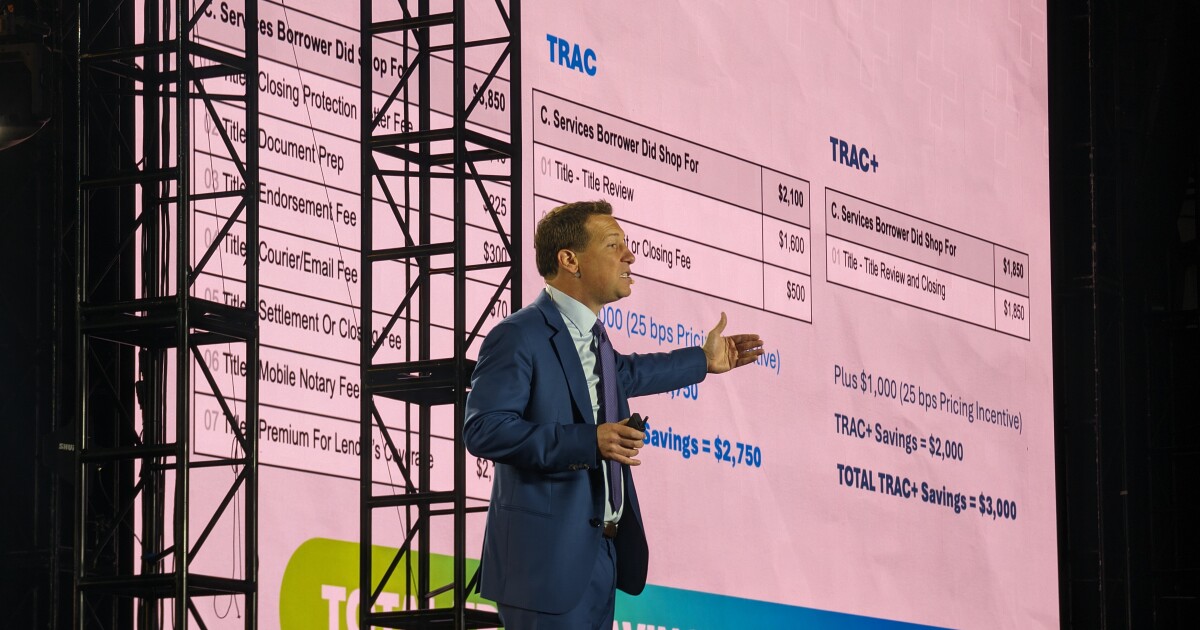
Non-agency residential mortgage-backed securities issuance should continue to diminish next year, as rates remain high and inventory stays challenged, a report from Standard & Poor's said.
"U.S. RMBS issuance was substantially lower than we expected, down over 50% year over year through the first three quarters," said the report titled Global Financing Conditions: Stubborn Rates Portend Slower Issuance Growth in 2023 and 2024, which covered various sectors. "In 2023, the U.S. housing market underwent a slight correction as rising mortgage financing costs further eroded affordability and slowed the record pace of home price appreciation seen during the pandemic."
This could be considered a downside surprise for a private-label securitization market that last December several observers had already commented it was expected to go from bad in 2022 to worse in 2023.
In a January report, S&P's projections were for $85 billion of non-agency issuance in 2023, a 40% decline from 2022's $140 billion and more than 50% from $190 billion in 2021.
Through the first nine months of this year, issuance is at just $45 billion and thus highly unlikely to meet even that modest forecast, noted Tom Schopflocher, a managing director, global research at S&P, in a follow up interview.
S&P does not expect it to get better, at least at the start of next year.
"U.S. housing supply remains constrained, which is exacerbated by borrowers choosing to keep their homes after having locked in low mortgage rates," S&P wrote. "With the anticipated growth slowdown, we expect loan originations and the issuance of U.S. RMBS to continue to decline into 2024."
The Mortgage Bankers Association's October forecast expects dollar volume to increase to $1.95 trillion in 2024 from an anticipated $1.64 trillion for 2023; this is across all loan types. On a per loan basis, the MBA predicts 5.18 million units will be created in 2024, up from 4.36 million this year.
As for the lock-in effect, a recent blog post from Fannie Mae walked back the position held by many, including that of the GSE's economic staff, that it was that factor instead of just one of several reasons why existing homeowners are not listing their property.
"Only 29% of mortgage borrowers told us that they plan to stay in their homes longer," said the blog posting from Mark Palim, deputy chief economist, and Rachel Zimmerman, market research advisor. "Importantly, of that population, 21% said this was primarily due to having a low mortgage rate, a subset that would represent only 6% of all mortgage borrowers."
Its research found that among the other reasons for not moving was that the borrower liked their current home and/or location, cited by 19%, with home prices are too high to buy — which some might say is a lock-in — and that my job and family are in my current location at 13% each.
"For more homeowners to be incentivized to put their homes on the market, other factors beyond mortgage rates may have to change, such as older generations aging out of their homes," the Fannie Mae blog said. "As it stands now, and given these results, even if mortgage rates were to decline meaningfully in the intermediate term, we would not expect to see a surge in home listings."
Another factor some observers think will affect PLS issuance in 2024 is the expected increase in the conforming loan limits. Already several lenders — including Rocket and United Wholesale Mortgage — have pre-emptively raised their internal conforming limit to $750,000 in anticipation of an increase when the Federal Housing Finance Agency makes its announcement expected in late November.
Still, the overall economic picture in the U.S. is not good, with the economist community split on whether or not a recession will take place in the first half of 2024.
It is too early right now to make any predictions regarding issuance volume for 2024, Schopflocher said. S&P's economists are among those calling for an economic slowdown with an increase in unemployment next year, but not a recession.
If that baseline forecast is accurate, "[issuance] could pick up next year," he said.
Still, the overall picture, as expressed in the report, is not bright.
"Consumer finances are coming under increased stress, with higher delinquency rates and more stretched credit lines, particularly for lower-income households. Mortgage rates have just hit 8% on 30-year loans in the U.S., and our recently released global auto sales forecasts have been revised downward for next year," the S&P report declared. "All of this could also weaken issuance for asset-backed securities and residential mortgage-backed securities if consumer spending continues to deteriorate."



